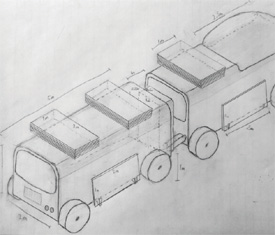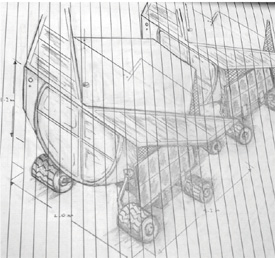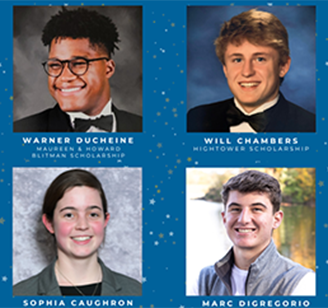March/April 2017
Communities: Education
Literature’s Not Just for Liberal Arts Majors
BY MARJAN EGGERMONT
 Many colleges and universities have instituted a common reading program for incoming first-year students. Typically, a book is selected by a campus committee and introduced during summer orientation activities. Students are expected to read the book in early fall and then participate in discussion groups and other activities.
Many colleges and universities have instituted a common reading program for incoming first-year students. Typically, a book is selected by a campus committee and introduced during summer orientation activities. Students are expected to read the book in early fall and then participate in discussion groups and other activities.
In 2013, our first-year design and communications course participated for the first time, because the book, No Impact Man by Colin Beavan, addressed questions about sustainable living and added value to a planned design project. Students were asked to read one chapter of the book, critically discuss it in groups, and then assign a spokesperson to summarize their chapter for the class and provide constructive criticism. This was done with the entire first-year class of 725 students over four lecture sections.
The next year, 600 students read the book The Martian by Andy Weir (before the movie was out in theaters) over the course of 13 weeks, with a variety of guest speakers and deliverables, such as mapping, data visualization, drawings, and online Q&A modules on engineering ethics. All deliverables contributed to the written and graphical communications learning outcomes for the course.
The reasons for introducing literature into a course for engineering students were summed up nicely by “Scientists and Engineers Need Literature,” an online article by Troy Camplin, a freelance writing consultant and former lecturer in English. He noted that:
- “Literary works are the most refined and complex versions of our natural way of thinking.” Reading sharpens your thinking and makes it more complex.
- Literature helps stimulate creativity. “Specialists in a field who only read and discuss the work of others in that field can settle into uncreative groupthink. Literature, with its complexities and narrative structures and alternative meanings, can break groupthink, creating new insights and possibilities.”
- Literature allows you to enter the life and world of different people and generates empathy.
 The above skills are important for lifelong learning, teamwork, and engineering design.
The above skills are important for lifelong learning, teamwork, and engineering design.
As an introduction to reading The Martian, the class listened to a guest lecture by a former astronaut, now the chancellor of our university. This helped inspire the students, and they were challenged to think about real-world design problems that exist in space by someone who had spent time on the International Space Station. And a lecture by one of our researchers showed students the orbital calculations involved and design challenges faced for guided atmospheric entry of a Mars vehicle.
For each chapter of the book, a different type of communication deliverable aligned with the type of information that was being discussed. For the chapter that described modifications to the Mars rover, students were asked to draw the rover based on the book’s description. The chapter that discussed the supplies the main character assembled to take to the pickup site had an accompanying data visualization exercise.
In addition to reading fiction in our first-year design class, students have also completed book reviews in our third-year technology and society class. Students could choose from a long list of books related to various fields of engineering study, and the book reviews consisted of one visualization per chapter.
Using the periodic table of visualization methods (www.visual-literacy.org/periodic_table/periodic_table.html), students selected different methods to communicate their ideas. Students spent more time with the book material because they were extracting different types of data and had to reread sections to make proper connections.
One idea for the future is to develop a Fiction for Engineers course to sharpen thinking, stimulate creativity, and enhance empathy. Until then, projects like this will be embedded in courses when possible.
For all the book projects to date, it was key to find the right books for the classes, which ranged from 200 to 600 students. The Martian was especially a big success, as it is well researched, technical, funny, exciting, and easy to read.
One student e-mailed two weeks into the semester and asked, “I have never really read fiction, but I have finished the book. What should I read next?”
Marjan Eggermont is associate dean for student affairs and a faculty member in the mechanical and manufacturing department of the Schulich School of Engineering at the University of Calgary, Canada.
She is also a board member of the American Society for Engineering Education. This article is based on a paper presented at the 2016 ASEE annual conference.


 Volunteering at NSPE is a great opportunity to grow your professional network and connect with other leaders in the field.
Volunteering at NSPE is a great opportunity to grow your professional network and connect with other leaders in the field. The National Society of Professional Engineers (NSPE) encourages you to explore the resources to cast your vote on election day:
The National Society of Professional Engineers (NSPE) encourages you to explore the resources to cast your vote on election day:




